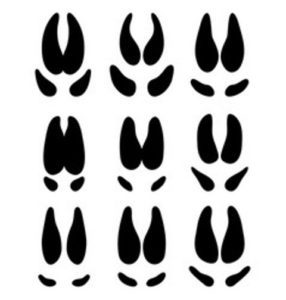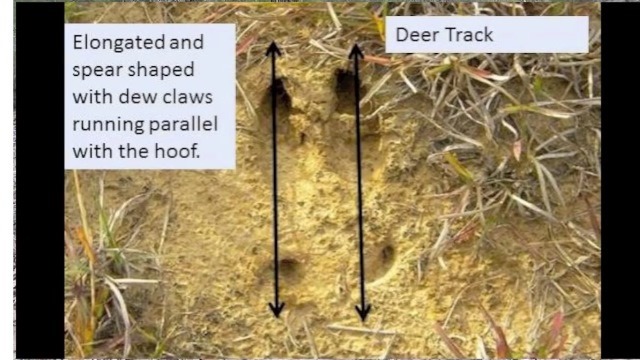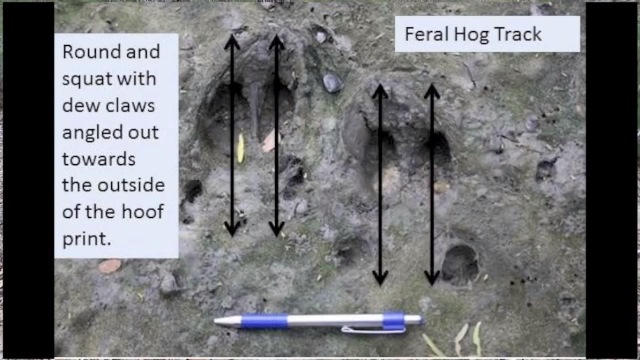Why do we need differentiate between Hog Track vs Deer Track?
One of the most exciting types of game to hunt is a hog or deer. When tracking them, you need to know how to identify hog track vs deer track.
Hog footprints have rounded ends, which are also pointed outwards. And their dew claw marks also point outwards. However, the dew claw prints are not as sharply imprinted as the footprints.
Deer have their hoofs elongated and the dewclaw points in the same direction as the hoofs. That gives deer tracks a parallel alignment.
Let’s look at how the footprints look like in the following image and videos.
How to Identify Pig Footprints When Tracking
 Hog tracks
Hog tracks
As you can see in the image below, hog tracks are rounded, and have a subtle difference from the elongated foot print of a dear. Check also the dew claws, and note how pig prints have their point outward, while those of a deer are parallel to the main print.
Deer Tracks

The tracks of deer feature pointed toes. Moreover, the prints have are spade or heart-shaped. Expert hunters use these differences to enable them to track wild pigs and score a kill. Wild pigs also leave behind hair and mud when rubbing themselves against trees and fences.
Tracking hogs is a skill that takes time and practice to master. Not all tracks are clear or easy to interpret, and the behavior of hogs can vary greatly depending on the conditions and the individual animals.
As such, tracking hogs is not a guaranteed method for hunting hogs, and should be used in conjunction with other hunting techniques and strategies.
1. Use Electronic Predator Calls
Predator calls can help to distract the animals and draw their attention away from the hunter, making it easier to get into position for a shot.
Furthermore, the sound of an electronic predator call can create a sense of urgency in the animals, making them more likely to move and present a better target.
Additionally, predator calls can be used to mimic the sounds of injured or distressed animals, which can trigger a predatory response in hogs or deer and draw them towards the hunter.
2. Use the Pig Footprints to Learn Where the Wild Pigs Roam
Wild pigs are large animals, making them easy to hunt and shoot at. When hunting them, you should ensure you know where they are heading. The direction of Footprints help you to do that.
Know how to react if they charge at you. Using the right binoculars or spotting scope enables you to spot them from a distance. Moreover, you should have use a powerful rifle to shoot it and have some patience.
3. Combine Pig Footprint Tracking and Boar Baits
If you’re going to use baits when hunting, you should leave them out for some time before you begin hunting. After a few days, the hogs will relate them to safe feeding areas.
They will reduce their suspicions, enabling you to hunt them easily. Remember wild pigs are creatures of habit, meaning they will keep coming back to eat.
The best combination is a footprint and pig calling. That is, immediately you spot fresh pig footprints, use your electronic pig call to lure them to ambush.
Identify a Hogs and Deer Tracks

Hog track vs deer track are easy to differentiate, if you look at the dewclaws and the overall shape of the hoofs.
Pig footprints are rounded and angled a little bit outwards. They feral footprints will also be a little more squat, and the dew claw marks are pointed outwards.

On the other hand, deer tracks that are elongated, and the dew claw marks are parallel with the footprints, and spear shaped.

[…] This call will work best on male boars. Female hog calls are very effective when combined with pig footprints. You can use them to lure in elusive […]